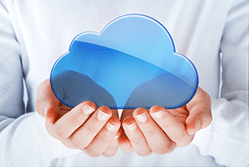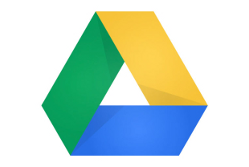Blog posts tagged cloud
Why PRISM means your hosting location matters

Millions of businesses rely on cloud technology each day, and recent revelations about PRISM have thrown data security back into the spotlight, demonstrating that where your data is physically located can really matter.
Where's the cloud?
Over the last five years or so more and more companies have started moving business data to the cloud. But while the benefits of the technology are clear, the implications are often not.
In truth, cloud technology can present some real challenges. Not enough companies are giving thought to the legal and physical implications of the cloud. I believe cloud providers have a responsibility to highlight these factors, of which location is one.
Location, location, location
|
It's widely accepted that companies should hold data in a secure facility (usually a building called a data centre, constructed specifically for the purpose). The location of that facility often get overlooked, but it matters.
For starters, some regions are prone to natural events such as earthquakes or floods. Others are beset by political instability and unrest.
The Euro crisis has hit confidence in some European countries which were previously considered rock-solid.
And then there's growing interference by governments - yes, we're back to PRISM again.
In light of these concerns, you're well-advised to investigate the setting of any potential cloud provider's facilities.
Where is right for you?
When evaluating the location of a cloud provider or hosting firm, these are the main factors to consider:
- Environmental risk. For instance, is the area prone to earthquakes or flooding?
- Political stability. Can you be confident the business environment won't change?
- An efficient legal system. If something goes wrong, you want a framework that makes it easy to seek redress.
- Low crime and corruption. You can be more confident about your data safety.
- Respect for confidentiality. After all, your business data is likely to be sensitive.
Staying competitive
Not only do you need to keep your data secure, but you also need to maintain a competitive edge.
Cloud services give you extra flexibility and make it easy for you to work on the move, but location plays a part in competitiveness too.
For instance, server response times can vary significantly depending on whether your servers are located relatively nearby (the same country or continent), or further afield (like the other side of the world).
This can have a very real influence on your website's search rankings, because load speed is one of the factors Google takes into account.
These are just some of the reasons your business should pay attention to the location of servers holding your data. Have you give it much thought?
Mateo Meier is founder of Artmotion, which offers hosting services located in Switzerland.
The future of the cloud - is it right for you?
 There has been no shortage of analysis of the cloud, and the business benefits it can bring. Unsurprisingly for an emerging technology, there has been a great deal of confusion about what it is and how businesses can use it.
There has been no shortage of analysis of the cloud, and the business benefits it can bring. Unsurprisingly for an emerging technology, there has been a great deal of confusion about what it is and how businesses can use it.
The uptake of cloud computing has even been slow among smaller businesses, which traditionally tend to be quicker to adopt new technologies. One piece of research found only 9% of small and medium-sized businesses were using the cloud at the end of 2011.
I think this is set to change and change dramatically. Our research found that one in four small businesses are transforming the way they work by embracing the cloud. Nearly half of these firms started using online software to run their business in the past 12 months.
The adoption of cloud technology amongst small businesses is really starting to gain momentum – something we have seen with our own cloud software. Reduced spending, more efficient use of time and the ability to stay connected regardless of location are factors that can improve business productivity, performance and - ultimately - stability and growth.
However, although adoption is increasing, confusion still exists. Many of our customers have needed advice about how to move services over into the cloud, and help to understand how it can best benefit their business.
If your business is considering a move to the cloud, here's my layman’s guide to what to think about before making the transition:
- There is no ‘one cloud fits all’ solution. Speak to experts who can help you understand how best to use the cloud and get advice on how best to implement the technology in different parts of your business. Analyse the risks and rewards involved, and the resources and support needed to deliver a smooth transition.
- Identify what existing services can benefit from the cloud. For example, should you focus on your file and email servers, storage systems and databases, office applications, or finance and accounting?
- Invest in your technology. Can your existing services handle the move? Is your internet connection fast enough? Have you got a backup plan in case your connection goes down?
- Make sure you have strong security. Keep internal and external security measures up to date, managed and monitored. Even if you aren’t using the cloud yet, your employees might be. Create a cloud security policy that covers the whole business. Choose your suppliers carefully, review their procedures, understand potential threats and how to avoid them.
- Plan, test and review. Talk to everyone and anyone you can about their challenges with the cloud, speak to staff ahead of a move and get their view on how it will impact their roles. Take it slowly – test the services and encourage feedback from staff, clients and suppliers. Conduct regular reviews to ensure you identify any potential issues before they happen.
Nick Goode is head of Sage One, a cloud-based accounts and payroll service from Sage (UK) Limited that requires no formal training and includes FREE 24/7 customer support and advice. Register for a FREE 30 day trial now or visit www.facebook.com/SageOneUK to find out more.
What does Google Drive mean for business?
 The launch of the long-rumoured Google Drive happened yesterday. But is this online storage a useful new service for businesses, or is it a step too far for a company that already knows so much about you?
The launch of the long-rumoured Google Drive happened yesterday. But is this online storage a useful new service for businesses, or is it a step too far for a company that already knows so much about you?
What is Google Drive?
If you’ve ever used Dropbox, SkyDrive, Box, SugarSync or any other cloud-based storage, you’ll be familiar with what Google Drive does. It gives you access to online storage, to which you can upload documents, photos, files … any of your data, basically.
You create a special folder on your computer (your ‘Google Drive’). Anything placed in this folder gets uploaded to your online storage. Here’s why you might do this:
- Easier backup. Google Drive creates a second copy of your data online. So it’s an easy way to backup your data.
- File synchronisation. If you use more than one computer, you can put your Google Drive on all of them – so files are managed across your computers.
- Anywhere access. You can log in to Google Drive through your web browser, meaning you can get at your files from any internet-connected computer.
- Easier sharing. You can share files with other people just by emailing them – and you can control who can view, edit and comment on them.
But what’s new? All these features are already offered by most of the other online storage services I mentioned above. Is there anything to make Google Drive different?
The Google Drive difference?
Perhaps the biggest thing that sets Google Drive apart from its competitors is the fact that it’s one of a whole portfolio of services from the ubiquitous search engine. This means Google Drive is closely integrated with elements of the company's other services. For instance:
- It works with Google Documents. This means you can edit documents stored in your Google Drive using Google Docs, the company’s online office suite.
- Searching it should be really, really good. Google does search better than anyone. So finding anything in your Google Drive should be a piece of the proverbial.
- It claims to recognise your photos. Apparently, Google Drive will recognise photos of things like the Eiffel Tower, so you can find them more easily.
There’s one other thing that makes Google Drive attractive, and that’s the price. It’s significantly cheaper than most competitors. For instance, it costs $9.99 a month (all the prices are in US dollars, even though I’m in the UK) for 50GB of storage with Dropbox. With Google Drive, twice that costs $4.99.
As with most cloud storage services, there’s also a basic free option – Google Drive gives you 5GB free, which is actually enough for loads of documents.
The true cost of Google Drive?
Google Drive is poised to shake up the online storage market. Expect prices of competing services to drop over the next few months, as Google takes a big bite of the market.
It may also be worth considering if your business already uses other Google Services, because Google Drive will work very well with them. If you’re using Google Apps for your email and document editing, then Google Drive may be a logical next step.
However, before you jump in with both feet, it’s worth just stopping to think through the implications of the service. Google uses detailed information about its users in order to show them targeted advertising. For instance, the adverts you see in Google Mail are determined – to some extent – by the content of your emails.
Google is likely to extend this capability with Google Drive. It might not show you adverts within your Google Drive, but it will almost certainly analyse your data to help it target ads at you when you’re signed in to other Google services.
So, are you comfortable granting Google access to your files, some of which may contain important business or personal information? The answer to that will probably depend on your attitude towards the company overall, and your feelings about targeted advertising.
As part of its Google Drive FAQ, CNET has a good summary of how Google says it may use your files. You might also be interested in this succinct argument against the service from Chris Armstrong and Aral Balkan’s interesting analogy.
Read Google’s official announcement about Google Drive. Will you be signing up to try the service?
Grow your business on a budget with the cloud
 Starting up is undoubtedly the hardest part of any business. Finding funding, scoring that all-important first client and managing on meagre cashflow are all difficult but important steps for any new enterprise.
Starting up is undoubtedly the hardest part of any business. Finding funding, scoring that all-important first client and managing on meagre cashflow are all difficult but important steps for any new enterprise.
But after a while - assuming you’re successful - you’ll be established with a stable client base. You might even be turning a profit. What’s next? If you’re ready for another challenge, it could be time to scale!
Reduce costs with the cloud
In the past, scaling often meant buying costly new equipment, paying a small fortune in software licences and employing a dedicated IT staff to manage it all. Nowadays, with modern cloud computing becoming more widespread, many of those costs have been eliminated. This means scaling your business - although still not without risk - is significantly more achievable.
Google Apps, for example, can take the place of your traditional Microsoft Office desktop suite, offering web-based email, calendar and productivity tools. Best of all, Google Apps is completely free for companies with up to ten employees.
Cloud software can pay dividends in other ways too. Without hefty applications weighing down your office computers (all you need is a web browser) you can do without expensive top-of-the-line computers. And because maintenance is managed by the cloud software provider, you don’t need the same level of in-house IT support.
Cloud computing to try for yourself
Cloud software is becoming so pervasive that new services are springing up every day to offer a cheap, hassle-free alternative to desktop software. Some of the more successful cloud software services are:
- Salesforce. A powerful-as-can-be customer relationship management suite that can scale from a micro-business all the way up to a large corporate. Salesforce has rapidly become the industry standard and sports so many add-ons that it can run your entire business.
Visit the Salesforce website >
- ZenDesk. This is a cloud-based helpdesk system which allows your employees to raise IT issues and interact with your support team. You can also populate it with help articles, tutorials and video content to help your staff help themselves
Visit the ZenDesk website >
- Dropbox. A fantastic tool for keeping yourself and your team in sync, Dropbox is like the shared network drives of old, but accessible absolutely anywhere. That includes computers, tablets and smartphones. The basic version is completely free!
Visit the Dropbox website >
- Crunch. There are a number of cloud accounting tools to help with your bookkeeping. One example is Crunch, my own company. It’s aimed at freelancers and micro-businesses and helps with all your invoicing, bookkeeping and expenses before submitting your tax return. It also shows your real-time tax liability and provides support from accountants.
Visit the Crunch website >
Which cloud computing tools does your business rely on? Have they made it easier for your company to grow?
- Cloud computing services to get you started
- Are you ready for cloud computing?
- Is cloud computing green computing?
Darren Fell is MD at Crunch.
Why 2012 is when businesses will embrace the cloud
 Was 2011 the year of cloud computing? Whatever your view, there’s certainly no denying that it created a lot of hype.
Was 2011 the year of cloud computing? Whatever your view, there’s certainly no denying that it created a lot of hype.
I like to say it was the year when businesses discovered the Cloud. It’s during 2012 that we’ll see a bigger movement towards it.
Cloud computing has been around for years, but it was only last year that the technology and marketing hit that critical point where businesses could start to fully understand what it is.
This year, 2012, will be the real year of the cloud. This is why:
- We get cloud computing. Most businesses now understand cloud computing. In March 2011 we ran a Twitter poll which found only 64% of people who answered had heard of the cloud. The same question asked in January 2012 saw the figure jump to 91%. (This year’s poll also revealed that although only 27% of respondents were using the Cloud, 75% said they would be considering it for 2012.)
- We like cloud computing. The cloud’s credibility has increased significantly. Along with other major companies, Apple can probably claim much of the credit for that, because it incorporated its own cloud service into advertisements for the new iPhone.
- It’s going to get social. Social networks show no signs of losing their popularity and the cloud is already starting to become more social, which makes it more appealing. Because cloud computing stores all your data centrally, it makes sharing and collaborating much easier. Take Salesforce: it’s taking this further with the introduction of Chatter, a private social network for employees.
- New jobs will emerge. Despite initial speculation that cloud computing would reduce the number of IT jobs available, 2012 will see new job titles emerging. The Recruitment & Employment Confederation recently announced that its members expect demand for staff with IT skills to increase in 2012. Job roles like ‘cloud transformation officer’ barely existed in 2011 and yet the number of roles available is set to grow this year.
- We trust it. Trust has always been a major issue with the cloud. People worry about where their data is stored, how safe it is and what the chance are of it getting lost. In response, cloud computing providers are addressing this issue, tightening security and demonstrating how the cloud often involves less risk than storing data locally.
At SpiderGroup, we are already seeing an increase in cloud popularity. We believe 2012 is, without doubt, the year of the cloud. And we promise not to say the same thing next year.
- Q&A: cloud computing security
- Cloud computing services to get you started
- Are you ready for cloud computing?
This guest post was written by Kerry Hale from SpiderGroup.
10 cloud apps to help you work anywhere

Photo credit: Camdiluv
Cassette tapes. Floppy disks. CD-ROMs. Is your hard drive heading the same way? Not yet... But you don't have to wait for your hard drive to die to imagine it in storage heaven. Businesses are already looking to the skies to store critical data and run applications, using what's called the cloud.
cloud com·put·ing: working with files and software on the Internet, rather than on your hard drive
Not only does working in the cloud keep your files and apps backed up and on the internet, it allows you to work anywhere. You don't have to be at your desk or even be at a desk at all.
Here are 10 cloud-based apps that can help you work wherever you like:
- Dropbox. Dropbox is a cloud app with wow-factor: for people new to working in the cloud especially, it's very impressive. It's a folder that sits on your computer, like any other folder, but the difference is its contents are stored remotely and synced across other computers and devices that are signed into your Dropbox account or sharing folders with you.
In summary, it could do to the USB stick what the MP3 did to the MiniDisc.
Because it looks like any other folder on your computer, it can also turn regular apps into cloud apps by hosting files and settings. For example, I use typing shortcut utility TextExpander. I put its settings file in my Dropbox so that my shortcuts sync across my desktop computer at home and my laptop when I'm on the move.Dropbox Basic is free and includes 2GB of storage; other account types are available.
- Evernote. Evernote is sort of like Dropbox for your brain. It helps you ‘remember everything’ by allowing you to capture notes and ideas, photos and screen grabs, sounds and links, sync them automatically to the cloud and access them from practically anywhere.
Evernote is available through your web browser, Windows and Mac desktop apps and mobile apps for iPhone, Android, Windows Phone 7, BlackBerry and Web OS.
Evernote is free; Evernote Premium is $5 per month or $45 per year.
- Google Docs. Google Docs might not be ready to take over Microsoft Office just yet, but it's edging ever closer. It includes apps for word processing, spreadsheets, presentations, drawings and forms.
You can upload files from your desktop to get started, access documents from connected computers and smart phones and collaborate in real-time with colleagues.
Google Docs is free.
- Gmail and Google Calendar. More from Google now, and I include them really as a reminder that if you work on the move it is essential to have hosted email and calendar that you can access from anywhere. In particular, mobile email is the lynchpin of any cloud computing system.
Google's solution is a good one, and it'll sync with your Android phone, of course, and with your BlackBerry, iPhone, Windows and Nokia phone using Google Sync.
Gmail and Google Calendar are free.
- Hootsuite. Power users will tell you that TweetDeck is the only way to manage your social media presence, but I disagree. I find its interface a bit grim, to be honest.
HootSuite, on the other hand, runs in your browser, on your smart phone and tablet device, does everything TweetDeck does and more, and it's better looking. Oh, and The White House (@whitehouse) uses it too.
HootSuite Basic is free; HootSuite Pro is $5.99 per month.
- Delicious. It looked like it was all over for Delicious when Yahoo dropped it, but fans and YouTube founders Chad Hurley and Steve Chen bought it and have kept it going. What is it worth it? Yes!
Delicious is a bookmarking service that keeps all of your important links in the cloud, so you can get to them from any computer.
Delicious is free.
- Instapaper. Ever get sent a link to an article that you don't have time to read right now? 'Read later' with Instapaper by clicking a bookmarklet in your web browser. Instapaper reformats the article so it’s easy to read on your chosen device.
And then it syncs up so the article is ready to read on its website or offline on your iPhone, iPad or Kindle - perfect for when you do have time to read, like when you're travelling.
Instapaper is free.
- Toodledo. It's not the best-looking to-do app, but it works really well. Get tasks out of your inbox by forwarding them to your Toodledo email address, organise them by folders, tags, context and subtasks, and sync them with your iPhone, Android or BlackBerry device.
Better-looking alternatives include Flow and Wunderlist.
Toodledo is free; Toodledo Pro is $14.95 per year; Toodledo Pro Plus is $29.95 per year.
- Salesforce. Salesforce is CRM software that sits in the cloud, allowing you to take your customers' details with you on the move.
Salesforce starts at $2 per month and can cost up to $250 per month, depending on what you need.
- Basecamp. Basecamp is project management software that's perfect for remote teams, allowing you to share files, deliver projects on time and - crucially - keep communication organised and out of your inbox (no-one needs more email, right?).
There's a free version of Basecamp; other plans can cost up to $149 per month, depending what you need.
- Cloud computing: a new horizon for small firms
- Online tools every freelancer should try
- Is IT the fifth utility?
All prices shown are in US dollars - you'll pay the equivalent in pounds charged by your credit card issuer.
San Sharma (@WorkSnugSan) is Community Manager at WorkSnug (@WorkSnug), a free mobile app and website that helps you find laptop-friendly workspaces, like coffee shops with Wi-Fi.
Is cloud computing green computing?

Can cloud computing reduce carbon emissions? (Image: Aske Holst on Flickr.)
More businesses than ever are moving some of their IT to the cloud. In fact Microsoft’s SMB Cloud Adoption Study 2011, which surveyed more than 3,000 businesses worldwide, showed that 39% expect to use at least one cloud computing service by 2013.
As concerns over global warming increase, cloud computing is being hailed as green computing too. But can this really be true? Is the cloud the easiest way to move to green computing?
What is green computing?
Green computing is computing which uses electricity efficiently.
According to a 2001 study (PDF link), an office of 10 typical PCs, storing data locally and saving documents on a server, consumes an average of 215 kWh of electricity per working week. Those PCs also produce a lot of heat, which may mean you need air-conditioning, using even more power.
In its most extreme form, cloud computing replaces your business PCs with ‘thin clients’ which contain no software, no disk and no moving parts. They connect to a remote server which stores data and does the actual work. Everything you need, you access remotely.
This can significantly cut the amount of energy you use in your office. On average, the same size office would consume 133 kWh per working week. That’s a big difference: in terms of carbon emissions, it’s like driving 9.000 fewer miles in a new car. Even allowing for improvements in PC efficiency since that 2001 study, you’re still likely to see a saving.
So it might mean you have green computing on your premises. But are you just shifting the environmental impact elsewhere?
Green computing doubts
Some environmental organisations have questioned how green the cloud really is. After all, cloud computing requires lots of servers, kept in vast datacentres which consume huge amounts of power.
Greenpeace has been particularly vocal in dampening the cloud’s green computing credentials. Their supporting report suggests IT energy consumption will triple by 2020. But could this just be down to the growing use of technology rather than the cloud?
After all, the use of home computers has been on the rise for years and 35% of homes now have more than just one computer.
The Greenpeace report does recognise that IT companies look to locate their datacentres in places that minimise the environmental impact. For instance, HP put a datacentre in Newcastle because then they could use the sea air to cool servers naturally. And Yahoo uses hydroelectric power in its New York datacentre.
The cloud and green computing conclusions
The environmental performance of cloud computing really depends on how you use it and which equipment you choose.
Older computers were not built to be environmentally friendly, so if you’re simply hooking a cloud computing service up to a five-year-old PC then you’re not doing a lot to move to green computing.
In contrast, combining the cloud with a modern, more energy efficient computer can almost certainly reduce the amount of energy your IT uses.
Check out the Google Chromebook. Almost nothing is stored on this laptop. All you have is a web browser, through which you have to do everything. This is perhaps green computing in its purest form, showing how cloud computing can help to create a greener technological future.
At SpiderGroup, we say cloud computing is green computing, and as it seems the cloud is here to stay, we think it can only get greener.
Does green computing matter to your business? Do you even care about being environmentally friendly? Let us know by leaving a comment.
- See common ways businesses use cloud computing
- How to tell if you're ready for the cloud
- Looking for space in the cloud? Get reliable web hosting
This guest post was written by Kerry Hale from SpiderGroup.



